Best Anti-Inflammatory Foods to Eat Daily for a Healthier, Longer Life
Contents
- 1 Best Anti-Inflammatory Foods to Eat Daily for a Healthier, Longer Life
- 1.0.0.0.0.1 Read DISCLAIMER
- 1.0.0.0.0.2 The material presented here is for general informational and educational purposes only and is not medical advice. Although we attempt to provide current and accurate information, this blog should not be used as a replacement for professional medical consultation, diagnosis, or treatment. In all cases, consult your physician or an accredited medical practitioner with regards to any medical condition or treatment. Do not ignore professional medical advice or wait for it on the basis of information provided by this blog. In a medical emergency, call emergency services immediately.
- 1.1 Understanding the Inflammation-Food Connection
- 1.2 The Role of Color on Your Plate
- 1.3 Leafy Greens: The Foundation of Anti-Inflammatory Eating
- 1.4 Berries: Small But Mighty Inflammation Fighters
- 1.5 Fatty Fish: Omega-3 Rich Powerhouses
- 1.6 Extra Virgin Olive Oil: Liquid Gold for Your Cells
- 1.7 Nuts and Seeds: Crunchy Anti-Inflammatory Snacks
- 1.8 Turmeric: The Golden Spice of Healing
- 1.9 Garlic and Onions: Pungent but Powerful Allies
- 1.10 Green Tea: A Daily Sip for Calm Within
- 1.11 Whole Grains: The Slow-Burn Energy Source
- 1.12 Dark Chocolate: A Sweet Treat with Benefits
- 1.13 Building Your Daily Anti-Inflammatory Plate
- 1.14 FAQs with Answers
Discover the best anti-inflammatory foods to eat daily to reduce chronic inflammation, boost immunity, and support long-term health naturally.
Read DISCLAIMER
The material presented here is for general informational and educational purposes only and is not medical advice. Although we attempt to provide current and accurate information, this blog should not be used as a replacement for professional medical consultation, diagnosis, or treatment. In all cases, consult your physician or an accredited medical practitioner with regards to any medical condition or treatment. Do not ignore professional medical advice or wait for it on the basis of information provided by this blog. In a medical emergency, call emergency services immediately.
Inflammation is a natural defense mechanism in the body — the biological equivalent of a fire alarm. It rushes in to help repair damage, fight infection, and heal injuries. But what happens when that alarm doesn’t turn off? Chronic inflammation is like a fire that keeps smoldering quietly in the background, gradually wearing down tissues, organs, and overall health. Over time, it can contribute to conditions like heart disease, diabetes, arthritis, and even certain neurological issues.
The good news is that food is not just fuel; it’s also one of the most powerful tools we have to calm this internal storm. While unhealthy diets can fan the flames of inflammation, the right foods can help extinguish them. In fact, your daily plate can either become a battleground or a healing ground.
In this guide, we’ll dive deep into the best anti-inflammatory foods to eat every single day, why they work, and how they can transform your health over time.
Understanding the Inflammation-Food Connection
Imagine your immune system as a vigilant security team. When invaders like bacteria or viruses enter, your team springs into action — swelling, redness, and warmth are all signs they’re on the job. That’s acute inflammation, and it’s usually temporary.
But in chronic inflammation, your immune system gets confused. It stays on high alert even when there’s no real threat. This can be triggered by processed foods, refined sugars, unhealthy fats, and chemical additives that essentially “trick” the body into thinking it’s under attack.
Anti-inflammatory foods work by providing antioxidants, phytonutrients, healthy fats, and vitamins that help reduce oxidative stress, regulate immune responses, and support repair at the cellular level. Eating them consistently isn’t just about avoiding illness — it’s about creating an environment in your body where vitality can thrive.
The Role of Color on Your Plate
Before diving into specific foods, it’s important to understand that nature has coded its most healing foods in vibrant colors. Reds, blues, oranges, greens, and purples in fruits and vegetables are often indicators of phytonutrients — plant compounds with anti-inflammatory and antioxidant properties.
Think of your daily plate as a painter’s palette. The more colors you add (naturally from whole foods, not artificial dyes), the broader the spectrum of nutrients you give your body. This diversity ensures you’re targeting inflammation from multiple angles rather than relying on a single nutrient or food group.
Leafy Greens: The Foundation of Anti-Inflammatory Eating
Dark leafy greens like spinach, kale, collard greens, and Swiss chard are some of the most nutrient-dense foods on earth. They are packed with vitamins A, C, and K, along with minerals like magnesium and iron, which support cellular repair and immune regulation.
The antioxidants in leafy greens, such as lutein and beta-carotene, help reduce oxidative stress — one of the key drivers of chronic inflammation. They also contain fiber that supports gut health, which is increasingly recognized as a major player in regulating inflammation throughout the body.
Adding a handful of fresh greens to your morning smoothie, tossing them into soups, or making them the star of your lunch salad can be one of the simplest, most effective ways to fight inflammation every day.
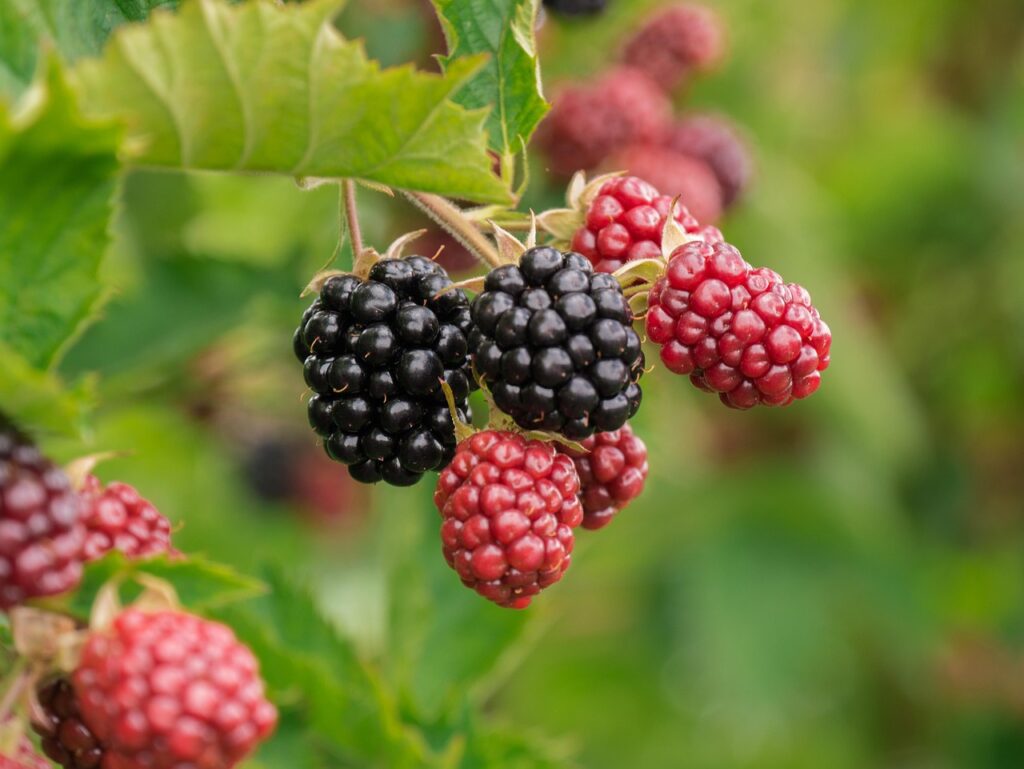
Berries: Small But Mighty Inflammation Fighters
Berries like blueberries, strawberries, raspberries, and blackberries might be small, but they pack a serious punch against inflammation. They’re rich in anthocyanins — the pigments that give them their deep hues — which have been shown to protect cells from damage, improve blood flow, and support heart and brain health.
Because berries are naturally sweet but low in sugar, they make an excellent daily choice for those aiming to keep blood sugar levels stable, another important factor in reducing inflammation. Sprinkling them on oatmeal, blending them into yogurt, or simply enjoying a bowl as an afternoon snack is a delicious way to keep inflammation at bay.

Fatty Fish: Omega-3 Rich Powerhouses
Salmon, sardines, mackerel, and trout are excellent sources of omega-3 fatty acids, which are well-known for their ability to dampen inflammatory processes in the body. Omega-3s work by competing with omega-6 fatty acids, which in excess can promote inflammation.
These healthy fats also support brain health, joint function, and cardiovascular well-being. Even if you’re not a fan of fish, plant-based omega-3 sources like chia seeds, flaxseeds, and walnuts can still provide anti-inflammatory benefits.
Incorporating fatty fish into meals two to three times a week — or sprinkling ground flaxseeds over breakfast daily — can create a steady stream of inflammation-fighting nutrients.
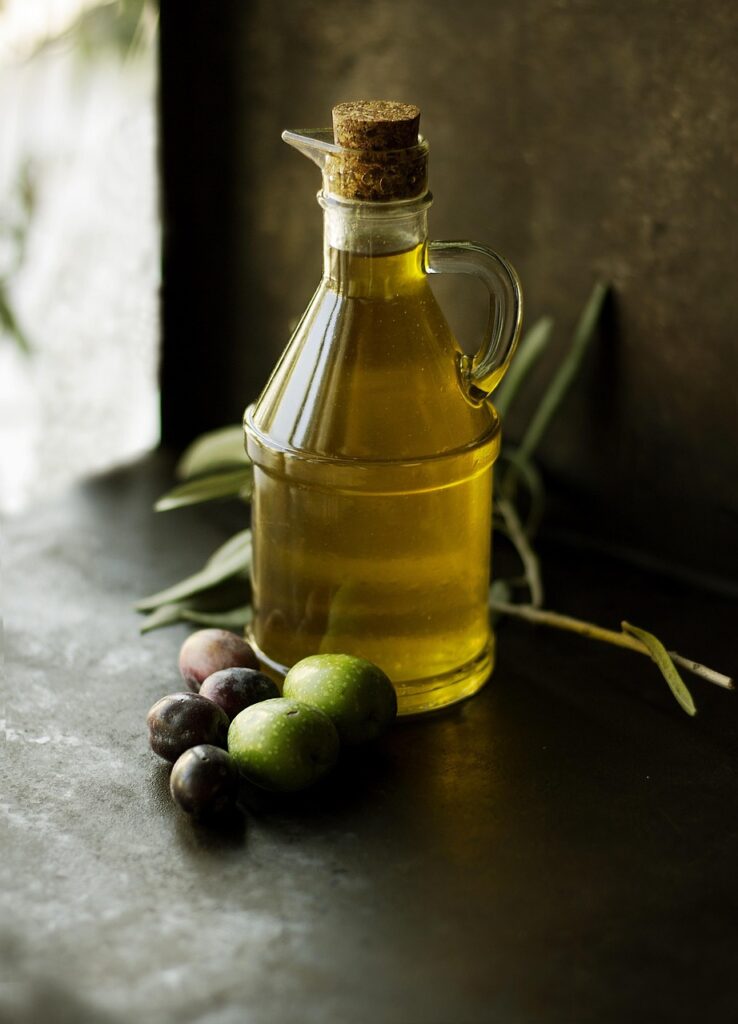
Extra Virgin Olive Oil: Liquid Gold for Your Cells
If you think of your cells as tiny engines, olive oil is like premium fuel that keeps them running smoothly. Rich in monounsaturated fats and polyphenols, extra virgin olive oil reduces inflammatory markers and supports cardiovascular health.
Its benefits go beyond just lowering inflammation; it also helps improve nutrient absorption from vegetables, making it a perfect partner for salads, roasted vegetables, and even drizzling over whole grains. The key is choosing high-quality, cold-pressed extra virgin olive oil to ensure you’re getting the maximum antioxidant content.
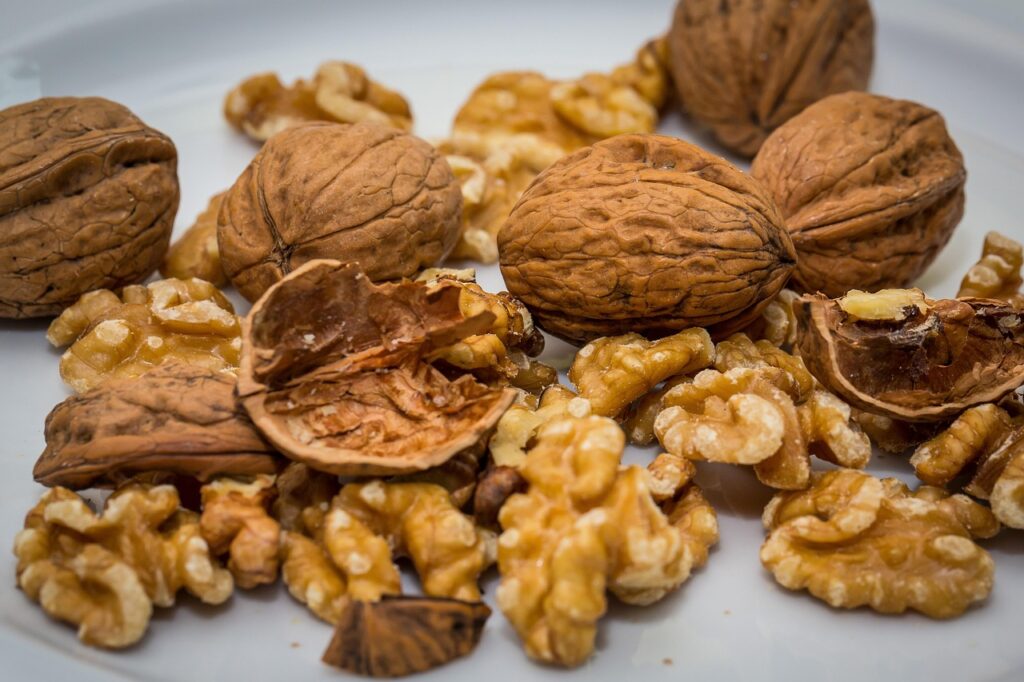
Nuts and Seeds: Crunchy Anti-Inflammatory Snacks
Almonds, walnuts, sunflower seeds, pumpkin seeds, and chia seeds are more than just crunchy toppings — they are nutrient-packed inflammation fighters. They provide healthy fats, plant-based protein, fiber, and a variety of micronutrients that support immune regulation.
Nuts and seeds also contain compounds like vitamin E, selenium, and magnesium, which collectively help lower inflammation and oxidative damage. A small handful daily can be a satisfying snack that keeps you full while nourishing your body.

Turmeric: The Golden Spice of Healing
Turmeric has been used for centuries in traditional healing practices, and modern research confirms its potent anti-inflammatory effects. Curcumin, its active compound, works on multiple pathways to calm overactive immune responses and protect tissues from damage.
Pairing turmeric with black pepper enhances curcumin absorption, making it even more effective. Adding it to soups, curries, teas, or even golden milk can be a flavorful way to integrate it into your daily routine.
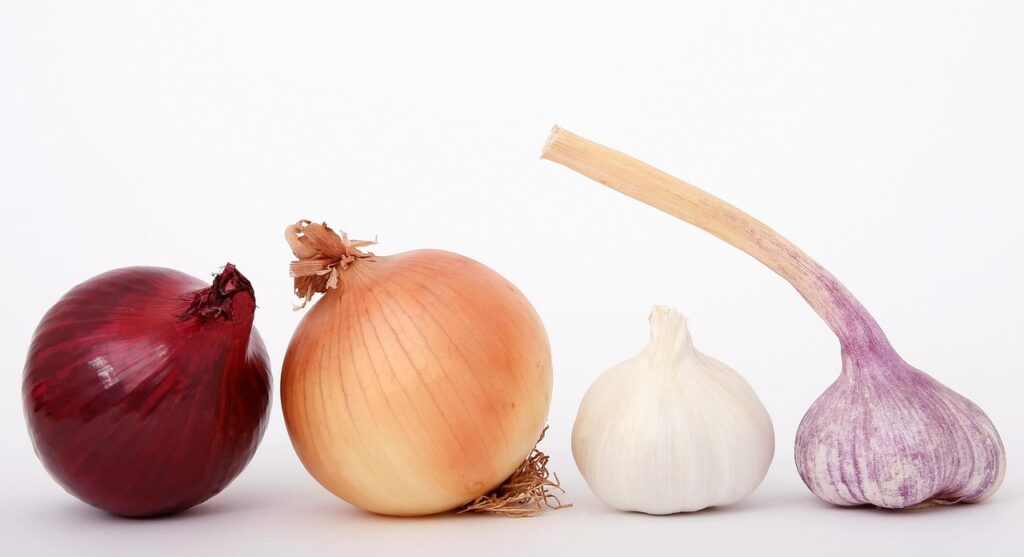
Garlic and Onions: Pungent but Powerful Allies
Garlic and onions may not win awards for breath-freshening, but their anti-inflammatory powers are undeniable. They contain sulfur compounds and antioxidants that support detoxification, reduce inflammatory markers, and strengthen the immune system.
Cooking them gently preserves their health-promoting compounds, while eating them raw in salads or dressings can give you an even stronger benefit.
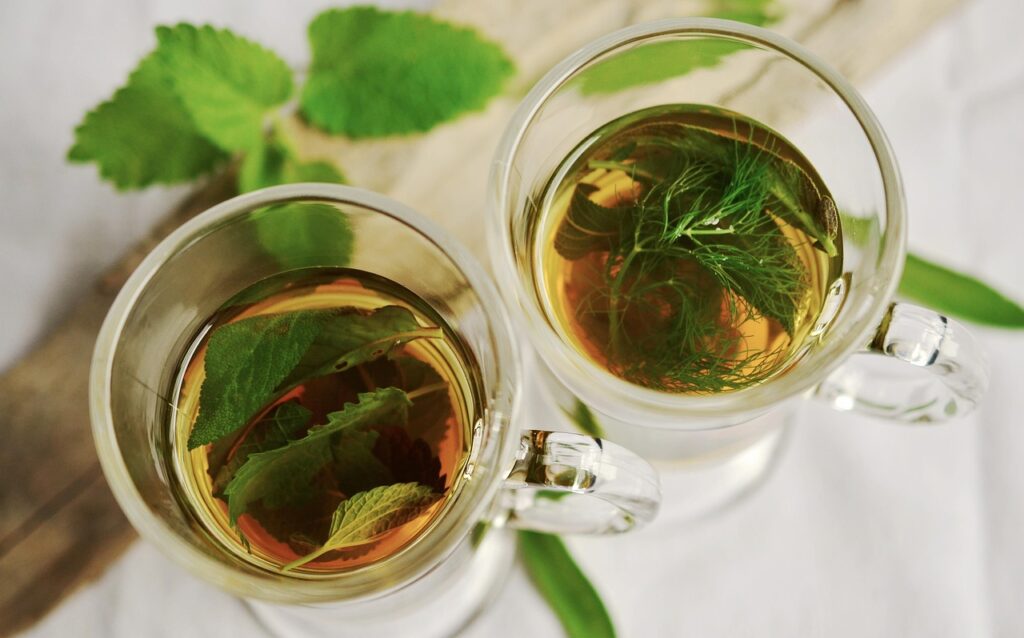
Green Tea: A Daily Sip for Calm Within
Green tea contains catechins, powerful antioxidants that help protect cells and regulate inflammation. It also supports metabolism, brain health, and cardiovascular function.
Making green tea a daily ritual not only helps your body but can also serve as a mindful break in a busy day — reducing stress, which itself is a driver of inflammation.

Whole Grains: The Slow-Burn Energy Source
Unlike refined grains, whole grains like quinoa, brown rice, oats, and barley provide fiber, vitamins, and minerals that help regulate blood sugar and feed beneficial gut bacteria. A healthy gut microbiome is closely linked to reduced inflammation, making these grains a valuable daily addition.
The steady energy release from whole grains also prevents the spikes and crashes in blood sugar that can trigger inflammatory responses.

Dark Chocolate: A Sweet Treat with Benefits
In moderation, dark chocolate (at least 70% cocoa) is rich in flavonoids — antioxidants that support heart health and reduce inflammation. The key is enjoying small amounts of high-quality chocolate without excess sugar or additives.
This makes for a satisfying end to a meal that feels indulgent yet supports your health goals.
Building Your Daily Anti-Inflammatory Plate
The beauty of anti-inflammatory eating is that it’s not about strict rules or deprivation. It’s about abundance — filling your plate with a rainbow of nutrient-rich, whole foods that work synergistically to keep your body balanced and resilient.
Start with a base of leafy greens, add colorful vegetables and berries, include a source of healthy fats like olive oil or nuts, and round it out with protein from fish, legumes, or seeds. Complement with herbs and spices like turmeric and ginger, and sip green tea or water throughout the day.
When this way of eating becomes second nature, you’re not just reducing inflammation — you’re building a foundation for lasting health, vitality, and even longevity.
FAQs with Answers
- What are anti-inflammatory foods?
Anti-inflammatory foods are natural, nutrient-rich options that help reduce chronic inflammation in the body. They are typically high in antioxidants, healthy fats, fiber, and phytonutrients, which work together to regulate the immune system, protect cells from oxidative damage, and promote overall wellness. - Why is it important to eat anti-inflammatory foods daily?
Consistently eating anti-inflammatory foods can prevent low-grade, chronic inflammation that contributes to heart disease, arthritis, diabetes, and other health issues. A daily intake ensures your body is continuously supported in maintaining balance and resilience against disease triggers. - Which vegetables are best for fighting inflammation?
Dark leafy greens like spinach, kale, and Swiss chard are among the best vegetables for reducing inflammation. They contain antioxidants, vitamins A, C, and K, and minerals like magnesium, all of which help regulate the immune response and support cell repair. - How do berries help with inflammation?
Berries such as blueberries, strawberries, and raspberries contain anthocyanins — plant compounds with strong antioxidant effects. These compounds protect cells, improve circulation, and lower inflammatory markers in the body while providing a low-sugar source of natural sweetness. - Can healthy fats reduce inflammation?
Yes, healthy fats like those found in olive oil, avocados, nuts, and fatty fish help reduce inflammation. They support cell membrane health, lower inflammatory proteins in the blood, and improve nutrient absorption from other foods. - Are whole grains good for inflammation?
Whole grains such as quinoa, oats, and brown rice provide fiber and essential nutrients that feed beneficial gut bacteria. A healthy gut microbiome plays a significant role in lowering inflammation throughout the body. - How does turmeric help with inflammation?
Turmeric contains curcumin, a compound known for its potent anti-inflammatory effects. It works by blocking certain enzymes and signaling pathways that promote inflammation. Pairing it with black pepper enhances absorption and boosts its effectiveness. - Can green tea reduce inflammation?
Green tea is rich in catechins, antioxidants that help protect cells from damage and regulate the body’s inflammatory response. Drinking it daily can also improve heart health and support weight management. - Are nuts and seeds anti-inflammatory?
Yes, nuts like almonds and walnuts, along with seeds such as chia and flaxseeds, are excellent anti-inflammatory foods. They offer healthy fats, protein, and minerals that work together to protect against chronic inflammation. - Is dark chocolate good for inflammation?
In moderation, dark chocolate with at least 70% cocoa content can reduce inflammation due to its flavonoid antioxidants. It supports heart health and provides a satisfying treat without spiking blood sugar when consumed sensibly. - How does garlic help fight inflammation?
Garlic contains sulfur compounds and antioxidants that help regulate immune function and reduce inflammatory markers. It also supports cardiovascular health and enhances the body’s natural detoxification processes. - What is the role of antioxidants in reducing inflammation?
Antioxidants neutralize free radicals, unstable molecules that cause cellular damage and trigger inflammation. By protecting cells, antioxidants help prevent chronic disease and maintain optimal body function. - How can I create a daily anti-inflammatory meal plan?
Focus on building meals around whole, colorful plant foods, healthy fats, lean proteins, and anti-inflammatory herbs and spices. Include a variety of greens, berries, omega-3 sources, and whole grains each day for balanced nutrition. - Can an anti-inflammatory diet improve energy levels?
Yes, reducing inflammation through diet can boost energy by improving cellular function, stabilizing blood sugar levels, and reducing the body’s workload in fighting ongoing internal stress. - How long does it take to see results from eating anti-inflammatory foods?
Some people notice reduced bloating, better digestion, or improved energy within a few days, while deeper benefits like reduced joint pain or improved lab markers may take several weeks or months of consistent eating.

Excellent blog here Also your website loads up very fast What web host are you using Can I get your affiliate link to your host I wish my web site loaded up as quickly as yours lol
Scratch cards are such a fun, quick thrill! It’s cool to see platforms like slot8 casino making gaming so accessible on mobile – instant fun, just like a scratch-off! Easy login sounds key for those quick moments. 😉
That’s a solid point about bankroll management – crucial for any serious bettor! It’s interesting how legend link club blends tradition with modern tech, even in their registration – a nod to Filipino beliefs! Definitely worth checking out.
Neo79bet, ah? Heard some good things. Their odds are competitive, lah. Need to deposit a bit to check everything properly, but first impressions quite ok. Maybe my new main site? See for yourself at neo79bet.